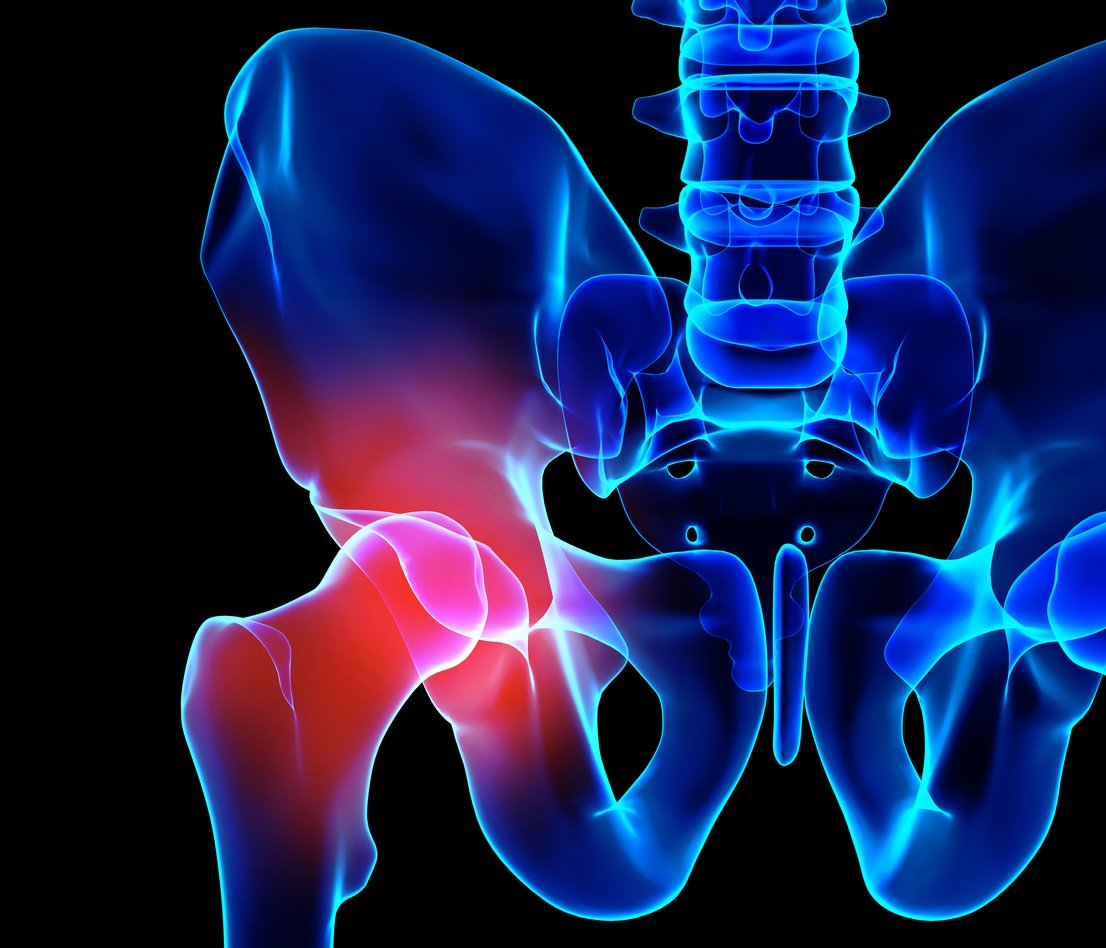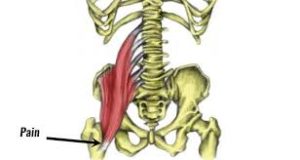Your hip replacement surgery was 6 months ago and you are still having pain. Is it normal to have groin pain after total hip replacement? What are the causes of groin pain after total hip replacement? What are the signs of a failing hip replacement? What treatment options exist? Let’s dig in.
Is it Normal to Have Groin Pain after Total Hip Replacement?
Pain after surgery is not uncommon and typically improves over several weeks. Persistent groin pain is not normal but unfortunately can and does occur after hip replacement surgery. The prevalence of groin pain after hip replacement is 0.4-18.3% (1). This can be very unsettling as many patients opt for hip surgery to free themselves from their groin pain and limited hip range of motion.
What Are the Causes of Groin Pain after Total Hip Replacement?
There are many causes of groin pain after a total hip replacement (2). The most common causes include:
Inguinal Hernia
An inguinal hernia is a weakening of the abdominal muscles that can cause groin pain.
Infection
Infection is always a concern in patients who have had surgery. In a recent study of 206 patients with pain after hip replacement, 22% had an infection (3).
Loosening of Artificial Hip Implant
The implant can become loose and cause pain. Brown et al demonstrated loose implants occurred in 22% of patients with pain postoperatively (4).
Low Back Nerve Irritation
Low back disc bulges, herniations, small joint overgrowth, and slippage can cause nerve root irritation with resultant groin pain.
Iliopsoas Tendonitis
Tendons are bands of thick connective tissue that connect muscles to bones. The Iliopsoas tendon starts in the lower lumbar spine and descends across the hip joint and groin to attach to the thigh bone. It can be irritated by a number of different factors which include retained cement (5), excessively long screws, or improper sized hip implant. Iliopsoas tendonitis is an increasingly frequent cause of groin pain (6). Pain is typically localized in the groin.
Pelvic Fracture
In surgery, the hip implant is hammered forcefully into place which can cause a pelvic fracture. Patients with poor bone density are at increased risk for pelvic fracture.
Related: 5 Possible Causes from Pain at the Front of the Hip
What are the Signs of a Failing Hip Replacement?
Pain in the hip, groin and anterior thigh with restriction in range of motion are the most common symptoms of hip replacement failure. Common causes of hip replacement failure are infection, loose implant, excessive wear and tear, dislocation, and fracture of the hip implant.
What Treatment Options Exist?
The best way to avoid groin pain after hip replacement is to avoid hip surgery altogether. Hip replacement surgery has been associated with significant complications which include pseudotumors (7), hip dislocations, strokes, metal toxicity due to wear particles, and an increased incidence in falls (8). In a recent study that followed 51 patients after hip replacement, activity level, and sleep were not improved at 6 months (9).
Treatment for groin pain after hip replacement depends upon the underlying source. Infection, a loose implant, and pelvic fracture require prompt surgical evaluation and may require additional surgeries. Conservative care in the form of rest, safe NSAIDs, stretching and PT are the initial treatment of choices for Iliopsoas tendonitis. When unsuccessful, steroid injections are often recommended. Steroids are powerful anti-inflammatory agents that are toxic to orthopedic tissue, and should be avoided. In addition, steroids also reduce local stem cell numbers and compromise immune system activity. Surgery is also an option if pain persists. In some cases, the Iliopsoas tendon is cut thereby relieving the pressure on the tendon. Unfortunately, this also significantly changes the biomechanics of the hip and lower extremity as the Iliopsoas tendon is a major stabilizer.
Are there new, natural treatment options? YES!
PRP and Stem Cell Treatments
PRP is rich in growth factors that can increase blood flow and decrease inflammation. Your stem cells are powerhouses of healing and can recruit other cells in your body to accelerate healing. The Iliopsoas tendon is easily seen and evaluated during an ultrasound examination. At the Centeno-Schultz Clinic were are experts in the treatment of hip and tendon injuries. All PRP and stem cell injections are performed under x-ray or ultrasound guidance to ensure that the cells are injected at the right place. This, in turn, results in better clinical outcomes and patient satisfaction.
Related: Outer Hip Pain
In Conclusion
Persistent groin pain after hip replacement is not normal but unfortunately does occur. Causes of groin pain after surgery include Inguinal hernias, low back nerve irritation, infection, loose implant, pelvic fracture, and Iliopsoas Tendonitis. Loose implant, infection, and pelvic fracture require a surgical evaluation and probable additional surgeries. The best treatment is to avoid hip surgery in the first place given the significant complications. Conservative care is the initial treatment of choice for Iliopsoas Tendonitis. Steroids should be avoided as they are toxic. Surgically cutting the tendon compromises the structure and function of the hip and lower extremity. PRP and stem cells are effective, nonsurgical treatment options as they increase blood flow and accelerate natural healing. If groin pain after hip replacement is robbing you of your passion and activity consider a Telemedicine consultation with a board-certified, fellowship-trained physician who can review your nonsurgical treatment options. Lose the sideline and get back in the game today!
1.Fink B, Lass R. [Diagnostic Algorithm for Failure Analysis of Painful Total Hip Arthroplasties]. Z Orthop Unfall. 2016 Oct;154(5):527-544. Epub 2016 Oct 11
2.R. A. Henderson, P. F. Lachiewicz. Groin pain after replacement of the hip Aetiology, evaluation and treatment. The Journal of Bone and Joint Surgery. British volumeVol. 94-B, No. 2. doi.org/10.1302/0301-620X.94B2.27736.
3.Ala Eddine T, Remy F, Chantelot C, et al. Anterior iliopsoas impingement after total hip arthroplasty: diagnosis and conservative treatment in 9 cases. Rev Chir Orthop Reparatrice Appar Mot 2001;87:815–819.
4.Browne JA, Bechtold CD, Berry DJ, Hanssen AD, Lewallen DG. Failed metal-on-metal hip arthroplasties: a spectrum of clinical presentations and operative findings. Clin Orthop 2010;468:2313–2320
5.Dora C, Houweling M, Koch P, Sierra RJ. Iliopsoas impingement after total hip replacement: the results of non-operative management, tenotomy or acetabular revision. J Bone Joint Surg [Br] 2007;89-B:1031–1035.
6. Lachiewicz PF, Kauk JR. Anterior iliopsoas impingement and tendinitis after total hip arthroplasty. J Am Acad Orthop Surg 2009;17:337–344.
7.Bosker BH, Ettema HB, van Rossum M, et al. Pseudotumor formation and serum ions after large head metal-on-metal stemmed total hip replacement. Risk factors, time course and revisions in 706 hips. Arch Orthop Trauma Surg. 2015;135(3):417-25.
8.Ikutomo H, Nagai K, Tagomori K, Miura N, Nakagawa N, Masuhara K. Incidence and Circumstances of Falls in Women Before and After Total Hip Arthroplasty: A Prospective Cohort Study. J Arthroplasty. 2018;33(7):2268-72.
9.D. Thewlis, J. S. Bahl, F. Fraysse, K. Curness, J. B. Arnold, M. Taylor, S. Callary, and L. B. Solomon. Objectively measured 24-hour activity profiles before and after total hip arthroplasty
The Bone & Joint Journal 2019 101-B:4, 415-425.doi.org/10.1302/0301-620X.101B4.BJJ-2018-1240.R1.

